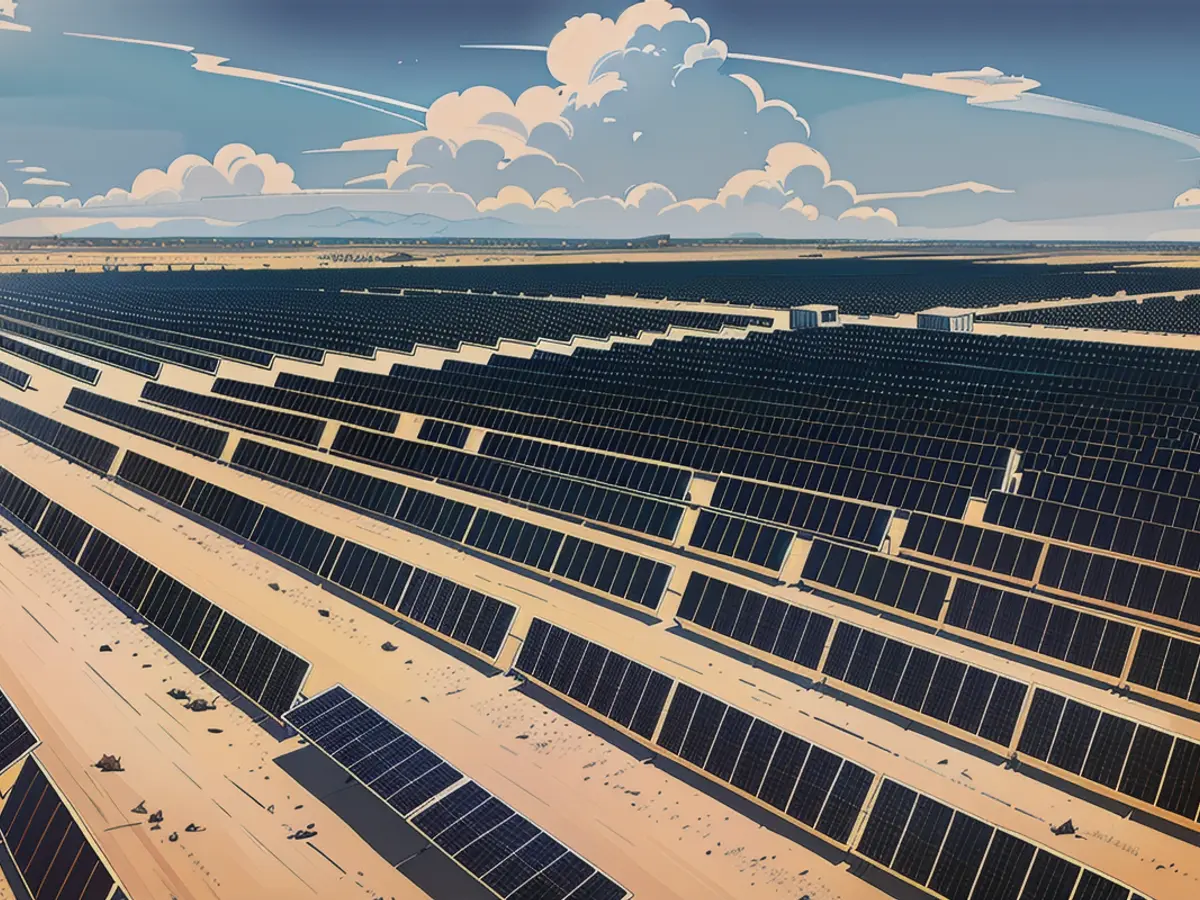Four graphs illustrate how the globe recently surpassed a significant clean energy threshold.
The world is quickly approaching a critical milestone for clean energy, claims a recent report from climate research group Ember. It predicts that global fossil fuel electricity generation will experience a slight decline in 2024, followed by even more significant drops in the years to come.
This shift toward renewable energy is essential in meeting global climate targets, emphasized Ember's Global Insights Director, Dave Jones. He exclaimed, "The renewables future has arrived!" and highlighted solar energy as a particular standout.
Breaking down the data, Ember's report shows that renewables accounted for over 30% of the global energy mix in 2023, a significant increase from the less than 19% in the year 2000. Incorporating nuclear energy into the equation, the world generated almost 40% of its electricity from low-carbon sources in the last year.
Despite record-breaking emissions in 2023, the proliferation of renewables resulted in a record low carbon intensity for the electricity sector, being 12% less than its 2007 peak.
Fossil fuels are taking a hit too, with their generation share in the overall electricity mix shrinking from 64.7% in 2000 to 60.6% in 2023. Ember anticipates this figure will plummet significantly in 2024 to 57.6%, as solar begins its rapid ascent.
The Ember report projects that renewables will undergo a massive boom, dramatically altering the landscape of the energy market. According to Jones, "We're going to get that boom in renewables, which will really change the picture very quickly."
Solar energy, in particular, had an outstanding performance in 2023, marking its19th consecutive year as the fastest-growing source of electricity. It generated almost twice as much new electricity as coal. Despite the immense growth, Jones warns there could be a surprise in store for 2024 since the solar installations rushed through at the end of 2023 have yet to reach their full potential.
While coal and gas still dominate the world's electricity production, their growth rate in 2023 paled in comparison to wind and solar.
A climate scientist at the non-profit NewClimate Institute, Niklas Höhne, described the rapid expansion of renewables as "remarkable" and proof that society can induce rapid change.
Unfortunately, the growth of renewable energy could have been stronger but for significant decreases in hydropower output due to droughts in countries like China and India. These lost power sources were largely replaced by coal.
China remains the leading country in solar generation, accounting for almost 36% of international production in 2023. However, its solar presence within its national electricity mix is surprisingly low, at around 6%, compared to the 10% or more in several other nations.
Among these are Chile (30%), Australia (17%), and the Netherlands (17%). Intriguingly, California, the fifth-largest economy in the world, generates 28% of its electricity from solar energy.
Global electricity demand surged to an all-time high in 2023, equaling the total consumption of Canada's entire electricity demand. However, growth slowed compared to the previous decade. China drove the demand, with both the US and EU experiencing sharp declines due to moderate weather and a slump in industrial activity, respectively.
Additional technologies are expected to contribute significantly to demand, including electric vehicles and heat pumps, as well as electrolysis and AI.
The analysis by Ember suggests that while demand for electricity will increase due to the proliferation of these technologies, the overall demand will decrease as electrification is more efficient than fossil fuels.
Nancy Haegel, a research advisor at the National Renewable Energy Laboratory, expressed optimism about the report. "The report provides hope," she said. "It shows that we can generate substantial amounts of electricity with renewable energy." But, she added, "The question is whether the transition will happen quickly enough."
Read also:
- This will change in December
- Dikes withstand water masses so far - Scholz holds out the prospect of help
- Fireworks and parties ring in 2024 - turn of the year overshadowed by conflicts
- Attacks on ships in the Red Sea: shipping companies avoid important trade route
The world's transition to renewable energy could significantly impact the climate, as the Ember report suggests that renewables will drastically alter the energy market and account for an even larger share of the global energy mix in the future. The world's reliance on fossil fuels for electricity generation is decreasing, with solar energy leading the charge as the fastest-growing source of electricity, surpassing coal in generation growth.
Source: edition.cnn.com








